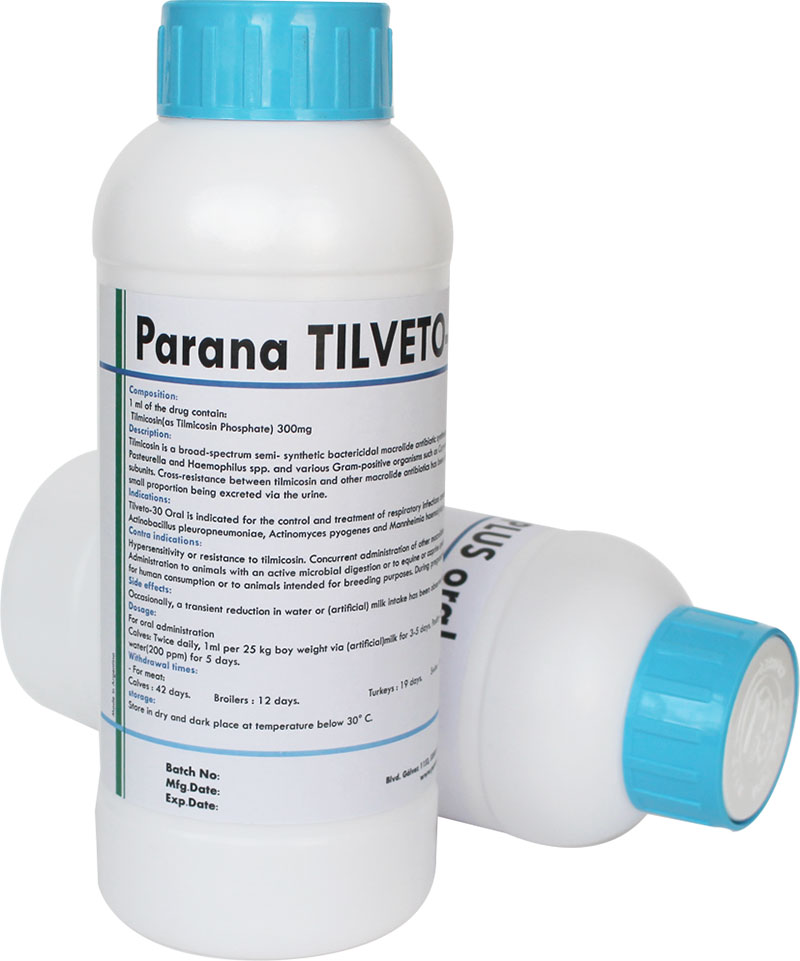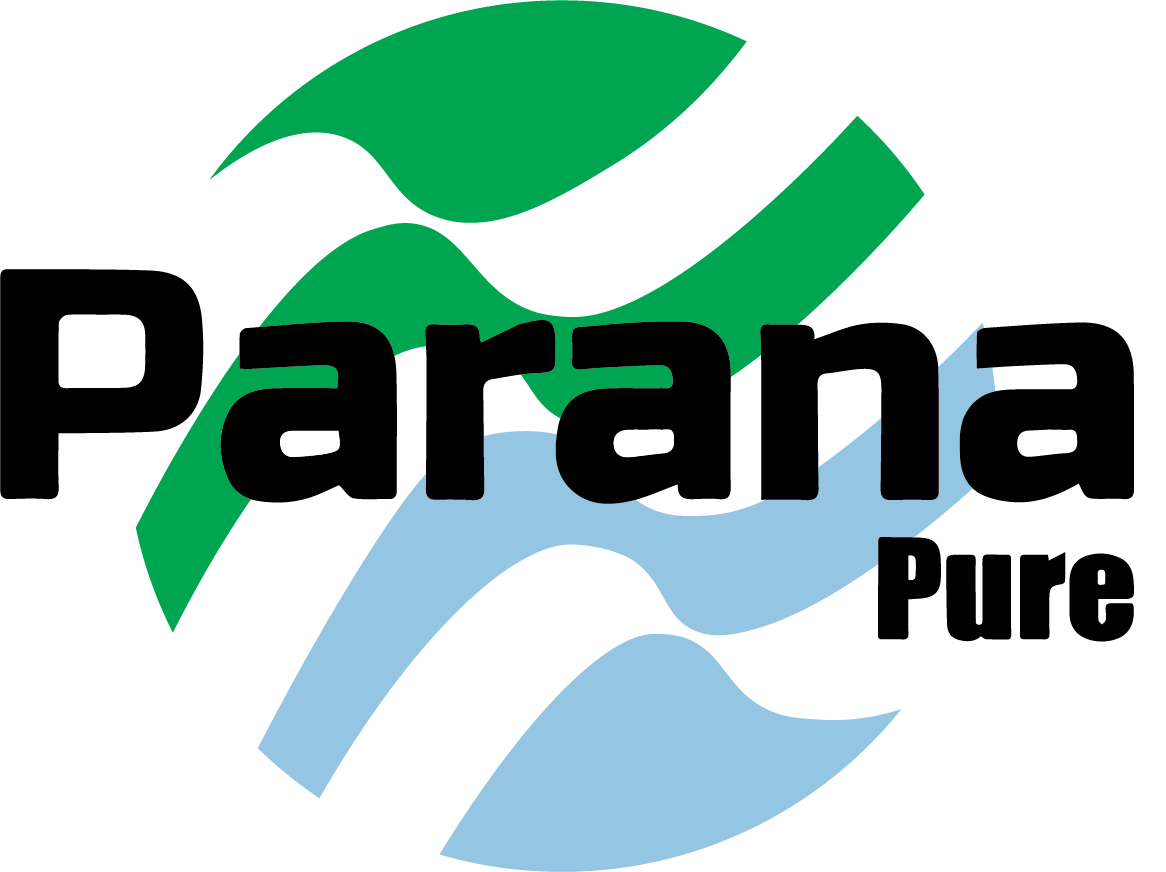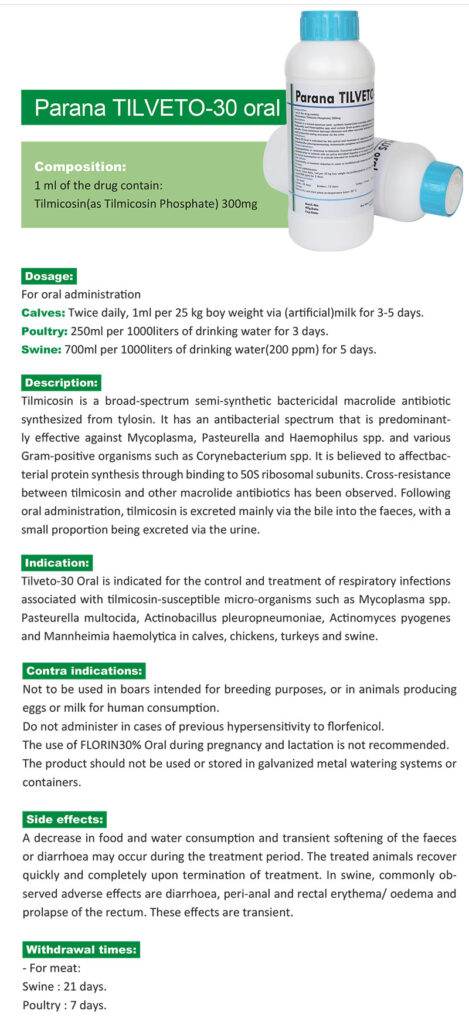
Parana TILVETO-30 oral
1 ml of the drug contain:
Tilmicosin(as Tilmicosin Phosphate) 300mg
Dosage:
For oral administration
Calves: Twice daily, 1ml per 25 kg boy weight via (artificial)milk for 3-5 days.
Poultry: 250ml per 1000liters of drinking water for 3 days.
Swine: 700ml per 1000liters of drinking water(200 ppm) for 5 days.
Description:
Tilmicosin is a broad-spectrum semi-synthetic bactericidal macrolide antibiotic
synthesized from tylosin. It has an antibacterial spectrum that is predominantly effective against Mycoplasma, Pasteurella and Haemophilus spp. and various
Gram-positive organisms such as Corynebacterium spp. It is believed to affectbacterial protein synthesis through binding to 50S ribosomal subunits. Cross-resistance
between tilmicosin and other macrolide antibiotics has been observed. Following
oral administration, tilmicosin is excreted mainly via the bile into the faeces, with a
small proportion being excreted via the urine.
Indications:
Tilveto-30 Oral is indicated for the control and treatment of respiratory infections
associated with tilmicosin-susceptible micro-organisms such as Mycoplasma spp.
Pasteurella multocida, Actinobacillus pleuropneumoniae, Actinomyces pyogenes
and Mannheimia haemolytica in calves, chickens, turkeys and swine.
Contra indications:
Hypersensitivity or resistance to tilmicosin.
Concurrent administration of other macrolides or lincosamides.
Administration to animals with an active microbial digestion or to equine or caprine
species.
Parenteral administration, especially in porcine species.
Administration to poultry producing eggs for human consumption or to animals
intended for breeding purposes.
During pregnancy and lactation, use only after a risk/benefit assessment by a
veterinarian.
Side effects:
Occasionally, a transient reduction in water or (artificial) milk intake has been
observed upon treatment with tilmicosin.
Withdrawal times:
– For meat:
Calves : 42 days.
Broilers : 12 days.
Turkeys : 19 days.
Swine : 14 days.
Storage:
Store in dry and dark place at temperature below 30° C.

